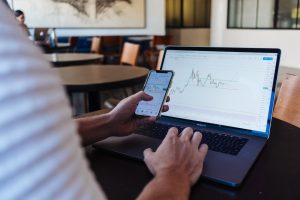Forex or foreign exchange trading is one of the most popular forms of investments in the world. It involves the buying and selling of currencies with the aim of making a profit. In recent years, the concept of micro trades has gained popularity among forex traders. Micro trades refer to small trades that allow traders to invest in the forex market with minimal capital. This article aims to explain what micro trades are and how they work.
What are Micro Trades?
Micro trades are small trades that allow traders to invest in the forex market with minimal capital. These trades can be as small as 0.01 lots or 1,000 units of the base currency. This is in contrast to standard trades, which usually require a minimum investment of 100,000 units of the base currency. Micro trades are ideal for beginner traders who want to test the waters of the forex market without risking too much capital.
Micro trades are also known as micro-lots or micro-positions. They are a good way for traders to practice their trading skills and strategies without risking too much capital. Micro trades are also useful for traders who want to diversify their portfolio and invest in different currency pairs.
How do Micro Trades Work?
Micro trades work in the same way as standard trades. Traders buy or sell a currency pair with the aim of making a profit. The only difference is that the investment amount is much smaller. For example, if a trader wants to buy the EUR/USD currency pair, they can invest as little as $10. This means that they can buy 1,000 units of the base currency (EUR) at the current exchange rate.
The profit or loss on a micro trade is also much smaller than on a standard trade. For example, if a trader invests $10 in a micro trade and the currency pair moves 10 pips in their favor, they can make a profit of $1. On the other hand, if the currency pair moves against them by 10 pips, they will lose $1.
Advantages of Micro Trades
There are several advantages to trading micro-lots in forex. These include:
1. Low Capital Requirement: As mentioned earlier, micro trades require minimal capital. This makes it easier for beginner traders to enter the forex market and test their trading skills and strategies.
2. Risk Management: Micro trades are a good way to manage risk. Traders can invest small amounts of capital and limit their losses if the trade goes against them. This can help them to preserve their capital and avoid blowing their trading account.
3. Diversification: Micro trades allow traders to invest in different currency pairs without risking too much capital. This can help them to diversify their portfolio and reduce their overall risk.
4. Practice: Micro trades are an excellent way for traders to practice their trading strategies and skills. Traders can test different trading strategies and see how they perform in real market conditions.
Disadvantages of Micro Trades
There are also some disadvantages to trading micro-lots in forex. These include:
1. Low Profit Potential: Micro trades have a lower profit potential than standard trades. This means that traders will need to make more trades to make a significant profit.
2. Limited Market Access: Micro trades are not available on all forex platforms. Traders may need to find a broker that offers micro-lots if they want to trade in this way.
3. Spread Costs: The spread cost on micro trades can be higher than on standard trades. This means that traders may need to pay more in trading costs for each trade.
Conclusion
In conclusion, micro trades are a popular way for traders to invest in the forex market with minimal capital. They allow traders to test their trading skills and strategies, diversify their portfolio, and manage risk. However, micro trades also have some disadvantages, such as low profit potential and limited market access. Traders should weigh the pros and cons of micro trades before deciding whether this is the right trading strategy for them.






